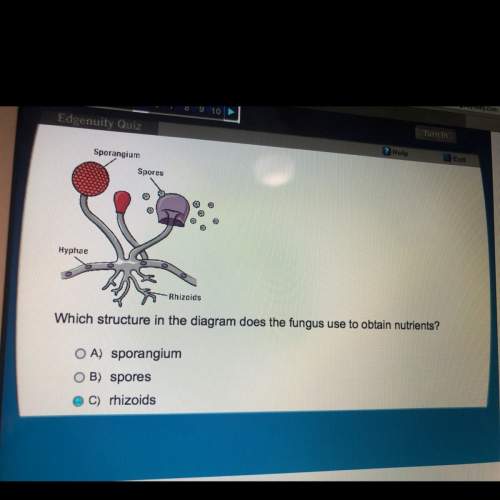
Apopulation of western skinks, a type of lizard, lives in a grassland habitat along the base of a mountain range. the construction of a multi-lane highway will divide the habitat into two separate regions. how will the construction of the highway most likely affect the western skink population? a. the western skink population size would decrease by half, reducing the probability that the population will evolve and speciate. b. western skinks would become better able to find unrelated mates, decreasing the population's susceptibility to diseases. c. western skinks would become an invasive species in one of the two regions, so the total population size would increase. d. the western skink population would be separated into two groups, and genetic diversity would decline in each group.

Answers: 2


Another question on Biology

Biology, 21.06.2019 21:10
Zoe decided to measure the hand length of each of her classmates. first she marked a line across each student's wrist and lined up a ruler from this mark to the top of the middle finger to measure the length. then she recorded the measurements in the table below. marla did this the same way for each classmate, and then zoe used this ruler to measure each straight line and record the data below. this data is invalid. what is the most likely reason why it is invalid? the ruler is marked in centimeters, but zoe recorded data in inches. the range of lengths is too wide, so zoe must have misread the ruler. marla’s complicated measuring procedure was overly confusing. marla could have been inconsistent while drawing outlines of fingers.
Answers: 3

Biology, 22.06.2019 02:00
The accompanying figure shows the percent of selected dna sequences that match between a chimpanzee and other primates. these data support the hypothesis that the figure shows the percentage of selected d n a sequences that match between the chimpanzee and other primates. the human has an almost 98 percent match, the gorilla has an almost 97 percent match, the orangutan has a 96 percent match, the gibbon has an almost 95 percent match, and the old world monkey has an almost 92 percent match. the accompanying figure shows the percent of selected dna sequences that match between a chimpanzee and other primates. these data support the hypothesis that the figure shows the percentage of selected d n a sequences that match between the chimpanzee and other primates. the human has an almost 98 percent match, the gorilla has an almost 97 percent match, the orangutan has a 96 percent match, the gibbon has an almost 95 percent match, and the old world monkey has an almost 92 percent match. chimpanzees and gibbons are the most closely related the chimpanzee's closest surviving relative is humans orangutans are the primates least closely related to chimpanzees old world monkeys and gibbons are the most closely related
Answers: 1


Biology, 22.06.2019 10:00
In the presence of oxygen, glycolysis is followed a. the krebs cycle b. lactic acid fermentation c. alcoholic fermentation d. photosynthesis
Answers: 2
You know the right answer?
Apopulation of western skinks, a type of lizard, lives in a grassland habitat along the base of a mo...
Questions


Mathematics, 22.01.2020 03:31

Mathematics, 22.01.2020 03:31

Mathematics, 22.01.2020 03:31



Mathematics, 22.01.2020 03:31

History, 22.01.2020 03:31


Computers and Technology, 22.01.2020 03:31

Mathematics, 22.01.2020 03:31

History, 22.01.2020 03:31

History, 22.01.2020 03:31


Biology, 22.01.2020 03:31


Geography, 22.01.2020 03:31

History, 22.01.2020 03:31





